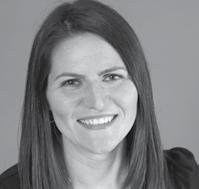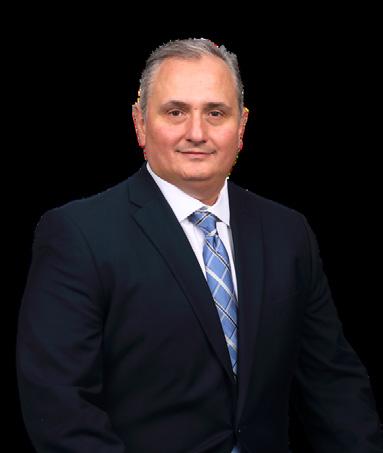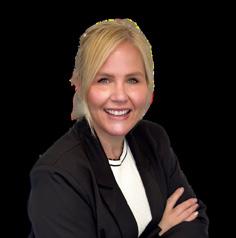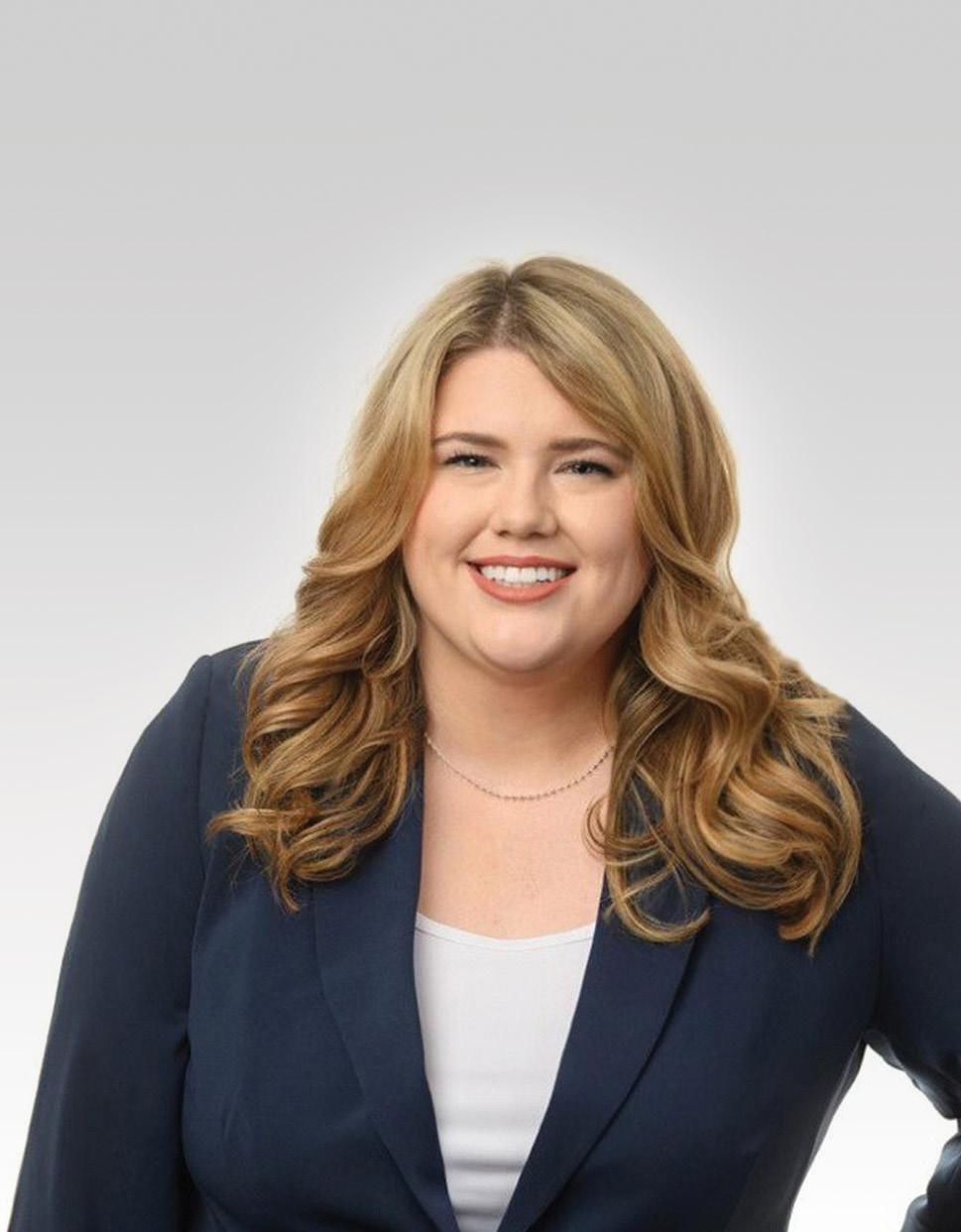
PEAK PERFORMANCE
How to manage burnout, build resilience & thrive p.18
LEADERSHIP MATTERS
CMBA’s new board & regional updates p.10, 22
What B.C. brokers need to know p.40 +


How to manage burnout, build resilience & thrive p.18
CMBA’s new board & regional updates p.10, 22
What B.C. brokers need to know p.40 +
IMBF SUMMIT
Global insights, local relevance p.8


At Haventree Bank, we offer smart lending solutions to improve the financial health of Canadian borrowers. We understand the challenges your clients face and are committed to working with you to help Canadians get back on track. Because like you, we see their potential. With flexible terms and empathetic underwriters, we can assist a variety of clients ranging from poor credit to small business owners looking to purchase or refinance their home.
Reach out to our BDM team to learn how a Haventree Bank Mortgage could be the right solution for your Client.

cus tom mor tgage solutions your client s require
cus tom mor tgage solutions your client s require
We
We provide a broad range of residential 1s t and 2nd mor tgages tailored to the needs of your self- employed, stated income, and low beacon
client s . Fur thermore, a common sense lending approach allows us to approve and fund deals fas t.
• Re sidential Mor tgages
• LT V Sliding Scale of 6 0% on the balance
• O PEN Terms Standard • B C , Alber ta and Ontario

P r i v a t e L e n d e r – F ilogix, Vel o ci t y a n d L e n des k
P






Canada’s crusade to reform AML and enhance FINTRAC powers BY CINDY ZHANG 18 32 40 features 36
10 22 28
INTRODUCING CMBA’S NEW BOARD
Uniting brokers and empowering communities, coast to coast BY SAMANTHA ASHENHURST
THE COLD TRUTH ABOUT PEAK PERFORMANCE
Dr. Greg Wells discusses burnout, resilience and thriving in a demanding world BY SAMANTHA ASHENHURST
MORTGAGE INDUSTRY LEADERSHIP
ACROSS CANADA
Regional leaders share how their associations are empowering mortgage brokers BY SAMANTHA ASHENHURST
BATTENING DOWN THE CYBER HATCHES
As global cybercrimes proliferate, the buck stops with the mortgage broker when it comes to protecting clients’ personal data BY LISA GORDON
ACCELERATED PROJECT APPROVALS UNDER THE BUILDING CANADA ACT BY THOMAS ISAAC, JEREMY BARRETTO, MATT HAMMER AND RACHEL DONNELLY
MORTGAGE SERVICES ACT ROLLOUT
What brokers need to know about the transition BY CARLA GILES
Advertisers’
Industry Profile: Doug Adlam – driven by a fear of mediocrity BY LISA GORDON Off the Clock: Debra Parker balances business and sport BY SAMANTHA ASHENHURST





THE CANADIAN MORTGAGE BROKERS ASSOCIATION
EXECUTIVE DIRECTOR Carla Giles
CMBA - ATLANTIC
Mortgage Brokers Association of Atlantic Canada
12M-7095 Chebucto Road, Halifax, NS B3L 0A1
CMBA - BC
Mortgage Brokers Association of British Columbia 900-2025 Willingdon Avenue, Burnaby, BC V5C 0J3
CMBA - ONTARIO
Independent Mortgage Brokers Association of Ontario 7-40 Winges Road, Woodbridge, ON L4L 6B2
CMBA - QUEBEC L'Association des courtiers hypothecaires du Québec 5855 Taschereau #202, Brossard, QC J4Z 1A5



CANADIAN
BILLING


BY CARLA GILES, MBA, CAE, CEO OF CMBA-BC, MBIBC, EXECUTIVE DIRECTOR, CMBA NATIONAL
The mortgage broker profession is navigating transformative change.
Technologies like artificial intelligence and embedded finance, evolving consumer expectations and regulatory reform are reshaping how – and where – advice is delivered. These shifts framed the core question at the 2025 International Mortgage Brokers Federation (IMBF) Summit in Dublin: How will brokers remain relevant in 2030 and beyond?
More than 60 mortgage brokers and association leaders from six countries – Australia, Canada, Ireland, New Zealand, the United Kingdom and the United States – gathered to explore this future together. From regulatory modernization to artificial intelligence (AI) integration, the dialogue reflected a shared commitment to empowering brokers as essential partners in the home financing journey.
Canada continues to play a leadership role in this global collaboration. As a member of the IMBF Board of Governors since 2022, I have had the privilege of working with international colleagues to amplify the Canadian perspective and advance global dialogue on key issues facing the industry.
Canadian brokers were well represented and contributed meaningfully to discussions on regulation, education and the digital ecosystem. This global engagement not only helps inform our national strategies it also highlights the strength and professionalism of Canadian mortgage brokers on the international stage.
The summit opened with welcoming remarks from IMBF chair Peter White and Brokers Ireland president Mark Nugent, who reinforced the importance of shared learning and unity across borders. Susan Hayes Culleton, also known as The Positive Economist, delivered a compelling global economic overview. Her analysis of inflation trends, interest rate pressures and the interconnected nature of global housing markets set the tone for a day of thought-provoking dialogue.
In a series of fireside chats, each country representative shared insights into their evolving mortgage landscapes. I was honoured to join Hayes Culleton on stage to discuss Canada’s housing supply crisis, the federal target to build 3.5 million homes by 2030 and the regulatory fragmentation that often stifles innovation. I emphasized the need for national collaboration, smart regulation and the adoption of digital tools – without losing sight of the broker’s value as a trusted guide through complexity.
Global perspectives enriched the dialogue. Rachel McGovern emphasized the value of professional advice and the challenges of the current administrative and technological landscape in the Irish mortgage market. Leigh Hodgetts of New Zealand noted that younger clients increasingly rely on social media for financial advice, challenging mortgage brokers to stay relevant and accessible. Peter White shared insights on Australia’s commission structure and his work developing mental health resources for industry professionals. Kimber White highlighted changes in broker licensing and consumer protection in the U.S., while Stacy Penn reflected on regulatory shifts and broker resilience in the United Kingdom. These shared insights underscored our common challenges and collective strength.
The agenda featured a dynamic series of presentations that helped frame these themes. Tony Moroney of The Digital Explorer challenged us to view AI and automation as enablers of empathy, not replacements for it. His message was clear: while algorithms can deliver efficiency, it’s the human broker who provides clarity, confidence and care. Simon Bednar of Finsure Group offered insights on aggregation models, urging brokers to claim a more proactive role in shaping their business relationships. George Obied of Judo Bank discussed how brokers are stepping into a growing void in SME lending, bringing relationship-based financing back to underserved markets. Canadian industry veteran Dustan Woodhouse delivered a rousing keynote, reminding brokers that relevance lies in relentless client focus. Paul Alexander of Royal London Ireland closed the day with a compelling case study on operational excellence, demonstrating how breaking down internal silos can elevate both broker and client experience.
Day two shifted formats to a World Café model – five rotating roundtable discussions on the future of the profession. The themes – Advice, Technology, Education, Inclusion and Innovation – offered a comprehensive lens through which to envision the broker of 2030. I had the privilege of facilitating the innovation table, where we explored open banking, embedded finance and the broker’s evolving role in an increasingly automated world. We discussed how mortgage brokers can stay visible in digitalfirst environments and deliver value to clients and lenders.
Each roundtable session was led by a member of the IMBF Board of Governors and captured insights that will inform global strategies moving forward. These conversations identified five cross-cutting priorities: advice remains our
As change accelerates across the financial sector, brokers are asking: How do I stay relevant and resilient in this new environment? Drawing on global conversations from the IMBF Summit, here are five practical ways brokers can prepare for the decade ahead:
Clients need more than access – they need understanding. Position yourself as a lifelong guide; not just a transaction facilitator. Show how your insights protect, clarify and support their biggest financial decisions.
Use AI and digital tools to boost your speed and simplify your operations, but never let them replace your judgment. Start with one small improvement: automating follow-ups, summarizing client notes or generating comparisons.
strongest differentiator; trust and technology must advance in tandem; educational frameworks must be modernized; inclusion enhances resilience; and brokers must be active co-creators of the platforms and policies shaping their future.
Across both days, a central message emerged: the role of the mortgage broker is evolving – not diminishing. The summit underscored our profession’s unique ability to bridge technology and humanity, offering clients not just access to products, but to insight, empathy and advocacy. As housing markets shift and client expectations rise, our continued relevance depends on leadership, collaboration and the courage to adapt.
The summit confirmed that mortgage brokers remain central to strong client outcomes – and that our future will be shaped not by disruption alone, but by the choices we make today to adapt and lead with purpose.
Professional growth isn’t about ticking continuing education boxes; it’s about building skills that matter. Seek out training that sharpens your communication, builds your business acumen and introduces emerging tech fluency.
If your team – or your network – all looks the same, you’re missing out. Support women and under-represented professionals through mentorship, flexible onboarding and visibility. Diversity drives insight.
Membership gives mortgage brokers a voice where it matters. Join your association, share your experience, and help shape policies that work for our industry and clients.
You don’t need to predict the future. You need to participate in building it. The mortgage brokers of 2030 will be tech-enabled, relationship-driven and strategically informed –and they’re starting now.


BY SAMANTHA ASHENHURST
B.C. MORTGAGE BROKER JOHN WOODS, PRESIDENT OF CMBA NATIONAL, CHAMPIONS GRASSROOTS STRATEGY AND INDUSTRY EQUITY AS KEY PILLARS FOR BROKERS NAVIGATING A CHANGING LANDSCAPE.
Canada’s mortgage industry is no stranger to volatility. Indeed, through recessions, pandemics and everything in between, the market has rocked, rolled and recovered.
Nonetheless, uncertainty – fuelled by global trade wars, tariff talk and other hot-button issues – remains the defining obstacle for the housing industry and, indirectly, mortgage brokers nationwide.
“In the same way businesses don’t want to invest without knowing it’s a sure thing, consumers don’t want to buy homes without some certainty,” says John Woods, the newly appointed president of Canadian Mortgage Brokers Association National (CMBA National). “This is especially true in the larger markets of Toronto, Vancouver and Calgary.”
While brokers can’t control the external forces that are shaping the market, they can control how they respond and support clients, says Woods. Key to this is staying current on the issues impacting market fluctuations.
“It really comes down to making sure we’re educated about what’s going on so we can effectively pass information on to the consumer,” he says.
This necessity is why education – in the form of webinars, information sessions, roundtables and more – is at the forefront for the provincial associations of CMBA-BC, CMBA-Ontario, CMBAQuebec and CMBA-Atlantic. Likewise, CMBA National, which serves these groups, plays a pivotal role, offering support to the associations through collaboration and resource sharing.
“While the national association isn’t an educator itself, anything we can do to assist the provincial associations and help them support their members is important,” says Woods. “With this collaboration, we aim to help them grow their memberships so that they have more flexibility in what they can offer their members.”
Brand recognition plays a role, too.
“It’s important to continue our work in getting the MB symbol recognized in our member provinces,” says Woods. “This helps brokers realize the significance of saying that you’re a member of your provincial association.”
When it comes to the changing mortgage broker landscape, Woods sees both growth and friction. The industry’s share of the mortgage market has steadily increased year after year, signalling rising public confidence in brokers’ expertise, yet this progress exists alongside structural challenges – chief among them, increased regulation.
“I don’t have any problem with the industry being regulated, but when we are in an uneven playing field, that’s an issue,” says Woods.
This disconnect, he explains, raises concerns about public protection.
“Depending on what survey you read or what part of the country you’re in, the broker share is
anywhere from 40 to 50 per cent or slightly more,” says Woods. “The reverse of that is that there are 50 to 60 per cent of the public that don’t have the protection of dealing with a mortgage broker because they’re dealing directly with the banks.”
On the flip side, that growing market share speaks to the opportunity in front of new mortgage brokers. When asked to share some words of advice for those who are new to the industry, Woods’s advice touches on practical grassroots strategy.
“Take a piece of paper and pencil,” he says, “and write down the names of everybody you know – family, friends, former business acquaintances, people you worked with, and anybody else. Pick up the phone and tell them that you’re new in the business and you’re ready to go.
“Then, on a local level, figure out what’s important to you and get involved,” he adds. “Whether it’s local government, the Rotary Club, the Lions Club, a hiking group – wherever it is where people connect with you. These are members of your tribe, and those people are more likely to do business with you – but they’re not going to do business with you if they don’t know you’re a broker.”






JOHN WOODS
PRESIDENT/ CMBA-BC
REPRESENTATIVE
Born and raised in Vancouver, John Woods spent more than 20 years working in the arts, theatre and opera. In 1990, he moved to Gabriola Island, a small gulf island off Vancouver Island, where he began his career as a realtor, working at both RE/MAX and Coldwell Banker in Nanaimo. In 2002, Woods became a mortgage broker, taking a position with Essex & Kent before branching out on his own in 2008. Today, he is part-owner of Fitzwilliam Mortgage Corporation, a Mortgage Centre Canada franchise based in Nanaimo and associated with Mortgage West. Woods has been a member of MBA-BC (now CMBA-BC) for nearly 25 years, joining the association the day he became a licensed broker. In 2020, he was honoured with the CMBA-BC Individual Partner Award.
Woods is an advocate for the right to housing regardless of an individual’s circumstances. He was on the founding board of Habitat Nanaimo and currently sits on the Gabriola Island Trust Housing Advisory Planning Committee.
JESSICA RICKERBY
VICE-PRESIDENT/ CMBA-ONTARIO
REPRESENTATIVE
Jessica Rickerby, vice-president of operations and managing partner at Martel Mortgages in Brockville, Ont., entered the industry in 2007 as an administrator before obtaining her
license in 2012. Rickerby, who has co-owned her brokerage since 2013, provides education and training across brokerages, speaks at industry events and serves on the board for CMBA-Ontario. Recognized for community involvement and philanthropy, she champions Canadian mortgage professionals and homeowners. She is a proud twotime recipient of Canadian Mortgage Professional’s Women of Influence in the Mortgage Industry Award.
JIM DECOSTE TREASURER/CMBA-ATLANTIC REPRESENTATIVE
Based in New Glasgow, N.S., Jim DeCoste is owner and principal broker of Dominion Lending Centres Maritime Mortgage Group, a 14-broker team that extends into New Brunswick and Prince Edward Island. DeCoste, who is pastpresident of CMBA-Atlantic, supports serving the regional association by building on its three-pillar foundation of providing mortgage brokers with educational and professional development opportunities; maintaining communication with regulators through government relations and advocacy; and raising public awareness of the importance of mortgage brokers and the mortgage industry to mortgage consumers. His advice for mortgage brokers is to learn as much as they can about the products available, take the time to understand the different lender guidelines and stay current on government regulations.
JEFF BROWN
SECRETARY/CMBA-BC
REPRESENTATIVE
Jeff Brown, vice-president of advisory and regulatory solutions at Stabilization Central Credit Union, has more than 30 years of experience in the banking industry. He’s worked with FCT, RBC, BMO, CWB and Coastal Community Credit Union in a variety of sales and leadership positions and has played a key role in providing education on the value of title insurance across Western Canada.
Brown has spent time on boards of the United Way and Football Nanaimo, working closely with community partners. He spends his down time with his family, supporting local soccer and football leagues, as well as playing in ball hockey leagues throughout the year.
ACHQ (CMBA-QUÉBEC) REPRESENTATIVE
Sylvain Poirier, president of SOCIUM Solutions in Brossard, Que., is an entrepreneur with more than 20 years of expertise in managing private mortgage funds. Driven by a passion for growth and collaboration, he is celebrated for fostering trust through transparency and honest communication. Poirier thrives on launching new projects, mentoring others and building lasting partnerships. His strengths in coaching, negotiation, public relations and market development have made him a respected presence in the lending sector – one whose motivation




stems from a constant desire to challenge himself and elevate those around him.
CMBA-ONTARIO REPRESENTATIVE
Leah Zlatkin serves as chief operating officer at Mortgage Outlet (MO) while also managing her own book of business as a mortgage broker. Zlatkin played a key role in partnering MO with The Mortgage Group, a collaboration that will bring enhanced operational efficiencies and economies of scale for agents. She is frequently quoted in major media outlets, including BNN Bloomberg, the Globe and Mail and CTV. She has also been invited to speak at the House of Commons Committee in Parliament, providing insights on federal housing investments. Zlatkin is a passionate advocate for new agents in the industry. During her time as president of CMBA-ON, she led initiatives to enhance education, networking and professional development for more than 900 industry members.
ACHQ (CMBA-QUÉBEC)
REPRESENTATIVE
Stéphanie Potvin is the training director at Montréal-based mortgage firm Hypotheca, where she draws on years of expertise in mortgage lending to empower the next generation of brokers. A seasoned educator, Potvin teaches credit management and brokerage practice at the Collège de l’enseignement immobilier (CEI), blending up-to-date market insights with hands-on experience to deliver relevant, personalized instruction. Dedicated to professional development and industry excellence, Potvin, who serves on the board of ACHQ (CMBA-Québec), offers tailored distance training to support new and aspiring mortgage professionals.
CMBA-ATLANTIC REPRESENTATIVE
Lesley Stevens, associate mortgage broker at Mortgage Alliance, currently serves on the boards of both CMBA-Atlantic and the Maritime Housing Society, a non-profit organization working to create more financially attainable homeownership options in the region. For Stevens, a mortgage isn’t just about buying a home: it’s about long-term financial security. She believes mortgages are a strategic asset that can support homeownership, build wealth, prepare for retirement and allow people to age in place comfortably. Her mission is to ensure every mortgage works hard for her clients.
CARLA GILES
EXECUTIVE DIRECTOR
Carla Giles, MBA, CAE, MA, serves as chief executive officer of both CMBA-BC and the Mortgage Brokers Institute of BC (MBIBC). A member of the sector since early 2022, Giles is dedicated to elevating the visibility and influence of mortgage professionals at national and international levels. She sits on the board of governors of the International Mortgage Broker Federation (IMBF), where she contributes to conversations on innovation, regulatory changes and professional excellence. An advocate for fair and effective regulation, Giles actively engages with policymakers to address industry challenges and support policies that enhance mortgage professionals’ ability to serve Canadians. Her leadership ensures that mortgage brokers remain at the forefront of industry advancements and are equipped to navigate an evolving regulatory landscape
Flexi Line™ – a secured Home Owners Line of Credit
Finally a flexible credit product for your high value clients!
Ask your BDM about our Flexi Line™ today!

We offer 24 Hour turnaround on commitments – allowing you to present solutions for your clients sooner rather than later.
Equity Lending up to 2,000,000 1st and 2nd Mortgages
Purchase / Refinance, ETO up to 75% LTV
Special offers for 600+ Beacon Scores in large urban centres
BRITISH COLUMBIA
Greg Kakuno
Business Development Manager 604-430-1498
gkakuno@capitaldirect.ca
ALBERTA
Donna Hunter
Business Development Manager
403-874-6348
dhunter@capitaldirect.ca
Kyla Hunter
Business Development Manager 403-278-6200
khunter@capitaldirect.ca
ONTARIO
Miro Rendine
Business Development Manager 905-299-1706
mrendine@capitaldirect.ca

BY CINDY ZHANG
In 2024, the federal government signaled that it planned to significantly strengthen Canada’s anti-money laundering (AML) legislative regime. Canada’s 2024 Fall Economic Statement signaled significant changes ahead for economic sanctions, modern slavery, and AML measures. Following that preview, on June 3, 2025, Parliament introduced the Strong Borders Act (Bill C-2).1
If adopted, Bill C-2’s amendments to the Proceeds of Crime (Money Laundering) and Terrorist Financing Act (PCMLTFA) and certain of its regulations will have the following watershed consequences for Canadians: n reporting entities will all have to be enrolled with the Financial Transactions and Reports Analysis Centre of Canada (FINTRAC), and will face much higher penalties for non-compliance than under the current penalties regime; and n a prohibition on any person or entity, including charities, on receiving payments in cash of C$10,000 or more for business purposes (and in the case of charities, as a donation), unless an exemption applies under regulation.
Bill C-2 proposes significant amendments across a number of other statutes with the intent to broadly strengthen Canada’s ability to investigate and prevent money laundering activity. For a summary of Bill C-2’s proposal to enact provisions in the Criminal Code that will give law enforcement access to an individual’s “subscriber information,” including personal information, online unique identifiers and transmission data when using internet services, see our team’s related client bulletin.
1. Mandatory FINTRAC enrolment and periodic renewal for all reporting entities
2. Broadened classification of “very serious” violations to include AML compliance program requirements
3. Increasing the maximum administrative monetary penalties (AMPs) FINTRAC can impose for non-compliance by 40 times the current range
4. A shift from an optional to a mandatory compliance agreement regime
5. Ban on large cash transactions and third-party cash deposits
6. Expanded public-private information sharing provisions In this post, we elaborate on these proposed legislative amendments and discuss the potential implications involved.
Currently, most entities that are subject to the PCMLTFA do not have to enroll with FINTRAC. Under Bill C-2, this will change, and all reporting entities will be required to register
with FINTRAC. Businesses impacted by the new enrolment requirement include, but are not limited to:
n Banks, credit unions and credit union centrals
n Trust and loan companies
n Securities dealers
n Casinos
n Financing or leasing entities, and factors
n Life insurance companies, brokers and agents
n Mortgage administrators, brokers and lenders
n Real estate brokers, sales representatives and developers
n Dealers in precious metals and stones
Enrollment with FINTRAC means that reporting entities will be subject to additional reporting requirements including providing notice to FINTRAC when information in its enrolment application changes and ensuring that it submits a renewal before the expiration of the enrolment. Of particular interest to large financial institutions is FINTRAC’s ability to revoke enrolment as a reporting entity if it fails to respond to the regulator’s information request within 30 days after it is made, or for another reason. It is unclear what the cascading impacts of an enrolment system would be for complex or
larger institutions that engage in activities that are outside FINTRAC jurisdiction. Under the current registration regime, a money services business (MSB) must register with FINTRAC before they begin to operate, not just engage in MSB activities.
This enrolment addition exempts domestic and foreign MSBs who are already required to register under the existing regime.
Bill C-2 will, if passed, implement the 2024 Fall Economic Statement’s proposal to increase administrative monetary penalty (AMP) amounts by 40 times. FINTRAC has the authority to impose AMPs on reporting entities for non-compliance. The quantum depends on whether the violation is classified as minor, serious, or very serious.

*All amounts in Canadian dollars and imposed are per violation.
**Certain violations will have a cap of $4 million if committed by an individual, and $20 million if committed by an entity.
An AMP can exceed the monetary caps listed above based on income or revenue
n For individuals, the cumulative AMP maximum is either $4 million or 3% of their gross global income in the preceding year, whichever is greater; n For entities, it will be $20 million or 3% of its gross global revenue of its global corporate group in the preceding financial year, whichever is greater.
This means a Canadian entity that sits within a foreign group of companies may be fined up to 3% of its foreign group’s global revenue. This aligns with the introduction of a reporting entity’s “ability to pay” as a factor when quantifying the AMP. We expect that the increased financial exposure in the new AMP ranges, will lead to further challenges of FINTRAC’s decisions at the Federal Court of Canada.
Under Bill C-2, FINTRAC will not only be able to review a reporting entity for compliance with the PCMLTFA and its regulations but also examine the records and inquire into the affairs of any person or entity FINTRAC believes on reasonable grounds to be a reporting entity.
Currently, the PCMLTFA requires reporting entities to have an AML compliance program “intended to ensure their compliance” with the statutory and regulatory AML regime. Bill C-2 proposes to strengthen this requirement, requiring that AML compliance programs are “reasonably designed, risk-based and effective.” It further proposes to escalate a compliance program violation from its current classification of “serious” to “very serious,” thus increasing the financial and reputational exposure for reporting entities whose compliance programs are found to be lacking.
Although the existing regime already expects reporting entities to take a risk-based approach and test the effectiveness of its compliance program
no less than every two years, statutorily mandating a reasonably designed, risk-based and effective compliance program will provide FINTRAC with wide latitude to scrutinize and challenge AML programs.
A reporting entity that receives an AMP for a prescribed violation must, under Bill C-2, enter into a compliance agreement with FINTRAC. Refusing to enter into a compliance agreement, or failing to comply with it, will result in a compliance order, and any contravention with such order is considered a new violation under the Act, which would lead to further fines.
Bill C-2 also introduces provisions that will make it an offence if a reporting entity knowingly:
n withholds material information; or
n provides or makes a false or misleading statement, including by omission.
Finally, for account opening, currently, the PCMLTFA prohibits opening accounts if identity verification cannot be duly performed on the potential customer. The amendments will explicitly prohibit the opening of an anonymous account or for an “anonymous end client,” defined as someone whose name is “obviously fictitious.”
The lack of ability to share information for AML purposes has long been deliberated in Canada. Bill C-2 proposes changes to the PCMLTFA, Personal Information Protection and Electronic Documents Act and Office of the Superintendent of Financial Institutions Act, in order to permit information exchange between public and private entities with access to relevant information to detect suspicious activity.
These changes, if implemented, will:
n Allow reporting entities to collect an individual’s personal information without their knowledge or consent to provide to law enforcement for AML, anti-terrorist activity financing or anti-sanctions evasion purposes, or another purpose that is “consistent” with one of the foregoing;
n Entitle FINTRAC to exchange information with the Superintendent of Financial Institutions, the Commissioner of the Financial Consumer Agency of Canada, the Governor of the Bank of Canada, the Chief Executive Officer of the Canada Deposit Insurance Corporation, and the Deputy Minister of Finance;
n Authorize FINTRAC to disclose specific information to the Commissioner of Canada Elections where reasonable grounds to suspect information is relevant to a violation of the Canada Elections Act.
Although Bill C-2 has not yet been enacted, its proposed reforms have the potential to recalibrate Canada’s AML, anti-terrorist financing and sanctions evasion framework. We expect the new laws, if they come into force, to significantly increase compliance expectations for reporting entities (and potentially other businesses) – while enhancing the investigative and enforcement powers of public bodies.
We will continue to track the progress of Bill C-2 and will post updates as they become available.
This article is republished with permission of McCarthy Tétrault a full-service law firm, offering a comprehensive range of legal and business solutions to Canadian and international clients. Cindy Zhang is an Associate in McCarthy Tétrault’s Toronto office. More information: mccarthy.ca























BY SAMANTHA ASHENHURST
Dr. Greg Wells believes in leading by example, even when it’s hard.
Case in point: When Canadian Mortgage Broker connected with the health and wellness expert for this article, he had just taken a cold plunge in Revelstoke, B.C. The practice, which is exactly what it sounds like (i.e. briefly submerging your body in water as cold as 10 to 15°C), offers a range of health benefits, including reduced inflammation, increased circulation and improved focus.
It’s something Dr. Wells has done consistently for almost a decade – even though he hates it.
“It’s the worst,” he says. “Every single time I do it, it’s just terrible.”
Despite its awfulness, the ritual, Dr. Wells explains, helps him ‘reset’ and clear his mind.
“No matter how bad your day is, once you get in the water, you think, ‘Okay, I can handle this,’” he says. “When I do it consistently, I find that my ability to do hard things in the rest of my life gets better, and my decision-making ability gets a lot better, too.”
For those familiar with Dr. Wells, his commitment to such a challenging pursuit is hardly unexpected. As a scientist and human physiologist who has worked with elite athletes, he has spent his career investigating the outer limits of human capability to maximize excellence.
Likewise, as an author and speaker, Dr. Wells excels at distilling complex science into actionable strategies that empower individuals to optimize their health and performance. Attendees of this year’s CMBA-BC Conference & Trade Show in Vancouver learned of this first-hand when Dr. Wells, a keynote speaker at the event, shared his insights on the twin cycles of peak performance: alternating between world-class work and deep, restorative rest.


“I know everyone thinks that, because they’re so busy, they need to sleep less to be better at work,” he says. “I can’t emphasize enough that this is not the case. The better you sleep, the more likely it is that you’re going to be rested.”
“This rest enables the elite-level work to be sustainable over a long period of time,” he adds.
Despite this fact, the role of rest is often overlooked. Unfortunately, for mortgage brokers – professionals whose roles rely on mental agility, creativity and decision-making – this lapse can lead to significant consequences.
“Recently, Deloitte Consulting put out a report on knowledge workers,” Dr. Wells says. “It showed that 83 per cent of these individuals are deeply engaged with their jobs, but also that 77 per cent of them are experiencing burnout.”
‘Burnout’ describes a state of profound exhaustion that persists even after rest. This is a reality that many people are currently living in, says Dr. Wells.
“You can love your job and know that you’re doing good things and helping people find their homes, but also be thinking, ‘My gosh, I’m so tired,’” he says.
For mortgage brokers, shouldering the weight of navigating complex financial landscapes for clients can, understandably, make things feel extra stressful.
“There’s so much pressure,” says Dr. Wells. “There are global economic headwinds, which creates uncertainty, and when there’s uncertainty, it can be very hard to make decisions.”
In these moments, it’s important to remember that, by prioritizing your own health and well-being, your interactions with clients will be exponentially better.
“When you take care of yourself, you’re actually taking care of others,” says Dr. Wells. “Like, the better of a place you’re in, the more likely it is that you’re going be able to help someone get a mortgage so that they can buy a home.”
In addition to consistently getting enough sleep, another component of the ‘rest’ cycle is properly nourishing our bodies by eating well.
“When we’re tired, stressed and working hard, we need to go beyond thinking of food as fuel, but also look at it as healing,” says Dr. Wells. “We’re eating foods that help our mind, brain and body recover and regenerate for us to be healthier.”




“There are many ways to win right now, but it usually requires deeper more intentional higher-level work. Quality of work – not quantity – is the way to do it.
Dr. Greg Wells

While it may be tempting to munch on whatever food is available throughout the day, Dr. Wells advocates for smart, intentional snacking.
“In the morning, we recommend nuts and seeds because they’re high in fibre and fat, which is amazing for stable energy and blood sugar,” he says. “In the afternoon, go for some berries. They give you a little bit of sugar, but still lots of fibre, and they’re packed full of antioxidants, which help to heal the brain.”
Be sure to stay hydrated, too.
“We should front-load caffeine during the day by drinking coffee in the morning and herbal tea in the afternoon,” Dr. Wells explains. “This makes sure the caffeine doesn’t stay in your system while you’re trying to fall asleep,”
“And, of course, water all day,” he adds. “Keep a glass bottle on your desk.”
Along with sleep and nutrition, moving regularly throughout the day is vital to our mental health and performance.
“Movement is really a superpower for brain recovery,” Dr. Wells explains. “When we move, our brain gets better. Even if we’re tired, when we go for a walk or do yoga or garden, it’s like we’re supercharging our brain.”
Intentionally moving your body every two hours or so is incredibly important for mental and physical health, he stresses.
“Sitting is an independent risk factor for cancer, neurodegenerative disease and cardiovascular disease, so regardless of how much you work out, the more you sit, the more likely it is that you’re going to have a chronic disease,” says Dr. Wells.
“When we alternate movement with stillness, that’s what enables focus and strategic thinking,” says Dr. Wells. “So, if you go for a walk and then you sit down at your desk and you’re still, the quality of your thinking is higher than if you were just at your desk the entire time.”
With the foundations of rest, nutrition and movement laid, Dr. Wells turns to a fourth, often underappreciated, pillar of peak performance: mindful thinking. Indeed, while physical habits shape our energy, it’s our mental habits that determine how we navigate the demands of modern life.
“In order to think clearly, you need to bring yourself into the present moment and avoid distractions,” says Dr. Wells. “Like right now, for example: I’m outdoors. I’m looking at a mountain. It’s green. The clouds are white and grey. I feel the sunlight hitting my skin. It’s warm. I feel the wind hitting my body. It’s cold.”
But what role does mindfulness play in high performance? According to Dr. Wells, it’s the gateway to self-awareness: the ability to notice when your thoughts have drifted and gently bring them back. Just like a muscle, your attention can be trained, and meditation, guided by the fundamental practice of mindfulness, is the workout.
“It’s like weightlifting for your attention, your focus and your concentration,” Dr. Wells explains.
“When we’re aware of our present moment and the senses that brings us into the present, you can use your breath as an anchor to keep you there,” he continues. “Meditation is the practice of doing that long enough that you get distracted, you notice you’re distracted and then you bring your attention back.”
This awareness is incredibly powerful, as being the observer of your mind helps remind you that you are not your thoughts.
“When you meditate, you’ll notice something about yourself,” explains Dr. Wells. “You might think, ‘Wow I noticed that I’m feeling anxious right now.’ Instead of you being anxious you noticed that you are feeling anxious, and it separates you from the negative emotion, which then enables you to do something about it.”
This notion of taking control is especially powerful for mortgage brokers.
“There are so many things outside of our control – the markets, the economy, tariffs,” says Dr. Wells. “I would love for people to have a sense of control; to feel like they’re in control and to know that, when they practice these habits and take care of themselves, that’s what’s going to enable them to up-level their work and practice healthy, sustainable high performance.”
What can we do to block out the noise and find solace in a world that always seems to be ‘on’?
Dr. Wells emphasizes that true work-life balance begins with intentional boundaries, as multi-tasking only leads to diluted focus and dissatisfaction on all fronts.
“When we’re doing two things at once, it doesn’t go well,” he says. “When you’re having dinner with your family and you’re checking your email, nothing is going well. You’re not doing a good job at work and you’re certainly not doing good job for your family.”
His advice? Establish simple, non-negotiable rules: no phones at the table, no emails at the gym, no calls after 7 p.m. These small ‘micro-barriers’ protect the quality of both personal and professional time.
Likewise, building transitional rituals between work and rest cycles can go a long way in delineating between professional and personal time.
“When you’re done work for the day, get into the habit of changing your clothes, taking a shower or going for a short walk,” he says. “Establishing a few simple rules makes a big difference when it comes to finding a balance.”
It’s also important to note the powerful role that brokers who are leading a team hold in modelling this balance. By visibly prioritizing their own wellness, these professionals can create

a ripple effect that encourages a healthier, more sustainable work culture.
“If you’re stressed, anxious or cutting corners with your health, everyone else will follow your lead,” says Dr. Wells. “If you’re high performing, clear, take the time for yourself, have healthy habits and are modelling that, it gives everybody else permission to do that at work, too.”
Ultimately, he says, thriving in today’s fastpaced world doesn’t mean doing more; it means doing better. This requires consistent, deliberate focus and the courage to unplug, recharge and lead by example.
“There are many ways to win right now, but it usually requires deeper more intentional higher-level work,” says Dr. Wells. “Quality of work – not quantity – is the way to do it.”
“Be consistent. Communicate with your clients, help people, be compassionate, be empathetic, be responsive. These things enable people to maintain that high level of sustainability.”






In a year defined by change, regional leaders from CMBA-Atlantic, CMBA-Ontario and CMBA-BC share how their associations are empowering brokers through advocacy, education and collaboration, all while elevating the profession coast to coast.
BY SAMANTHA ASHENHURST
As Canada’s mortgage landscape continues to evolve with new regulations, shifting markets and mounting consumer needs, the provincial mortgage associations united under the Canadian Mortgage Brokers Association (CMBA National) are rising to meet the moment with clarity, purpose and collaboration. From coast to coast, these groups are advocating for mortgage professionals, each with a unique lens shaped by their geography, members and the challenges faced locally.
Canadian Mortgage Broker sat down with three of CMBA’s regional presidents – Hannah Martens in Atlantic Canada, Michelle Campbell in Ontario and Rebecca Casey in British Columbia – to explore what leadership looks like on the ground, how each area is responding to change and why being part of the national CMBA network is more valuable than ever.
“There are so many opportunities to grow your business. Compared to the number of realtors we have in Atlantic Canada, there are a lot less brokers, so everyone’s super busy.
Hannah Martens
On Canada’s East Coast, Hannah Martens, president of CMBA-Atlantic, is leading with optimism and clarity as the region continues navigating the aftermath of COVID-19.
“The pandemic was very difficult for the organization, and we’re still rebuilding in many ways,” she says. “This year, our biggest priority is increasing our membership.”
Integral to this goal, Martens shares, is reinvigorating member engagement for the association, which represents all four Atlantic provinces.
“We’re making sure we’re visible,” she says. “We’re trying new things, hosting more events, and seeing a great turnout.”
With a lean staff, governance improvements also remain key to the group’s success.

“We’re focusing on board governance and making sure that, operationally, we’re running as smoothly as we can,” she says. “It helps that our board is really strong. They do a great job steering the ship.”
Building a solid internal foundation is just one piece of the puzzle for CMBA-Atlantic. With strong governance in place, the association is well-positioned to support brokers in a region experiencing rapid growth. The East Coast has seen a surge in population in recent years, driven by both international and interprovincial migration.
“We’re seeing a lot of people move out East from B.C., Ontario and Alberta, and that’s been a huge source of business for a lot of brokers,” says Martens.
“There are so many opportunities to grow your business,” she continues. “Compared to the number of realtors we have in Atlantic Canada, there are a lot less brokers, so everyone’s super busy.”
Atlantic brokers aren’t just busy; they’re thriving in a highly active market. The surge in business is fuelled not only by a low broker-to-realtor ratio but also by mounting pressure in the rental sector. With fewer available units, the region has seen a generous uptick in investment properties.
“The markets here are booming,” says Martens. “The June numbers just came out for residential real estate on PEI, and we we’re at nearly 52 per cent more than the same month in 2024.”
Of course, amidst strong sales and vibrant market conditions, hurdles remain. One persistent concern is the pressure from banks competing directly with brokers.
“There are some members who have been hit really, really hard by that, and

“We want to raise the bar when it comes to professional development and create programs that help brokers and agents grow their confidence and their skills; not just check off continuing education boxes.
Michelle Campbell
others who haven’t been impacted as much,” says Martens. “I’m an optimist, though. I feel like there are a lot more opportunities than downfalls for us as brokers here.”
Martens’ optimism carries through to her involvement at the national level. While challenges exist, she sees strength in connection and collaboration across provinces. Being part of CMBA’s broader network gives CMBA-Atlantic a platform to exchange ideas, seek support and advance shared goals.
“As a smaller association, it’s amazing,” Martens says. “We know we can go to CMBA National for event ideas or guidance when we’re working on our policy or governance.”
“I’ve always seen CMBA National as a grassroots organization in the industry,” she continues. “I really love the camaraderie we have as provincial associations and the way the National brand brings us closer together.”
As for what’s on the immediate horizon, excitement is building for CMBA-Atlantic’s upcoming charity golf tournament – its first ever to take place on Martens’ home base of PEI. She hopes
the event will pave the way for greater visibility and lender engagement.
“I hope those who attend from our other provinces see the prosperity here,” she says. “There’s a lot of opportunity.”
Ont.
In Ontario, the province with the largest concentration of mortgage professionals nationwide, CMBA-Ontario is embracing its provincial leadership role with purpose and vision. Guided by its president, Michelle Campbell, the association is putting education, connection and advocacy at the forefront of its mission.
“We’re at a point where the industry needs more substance, more support and more opportunities,” she says.
“We want to raise the bar when it comes to professional development and create programs that help brokers and agents grow their confidence and their skills; not just check off continuing education boxes.”
This commitment to deeper learning is paired with a recognition that success in the industry isn’t just about technical know-how – it’s also about connection.
“It’s one thing to know the business, but it’s also another to build strong relationships,” says Campbell. “We’re putting a lot of energy into creating meaningful space to connect, through symposiums, panels and partner events.”
When it comes to advocacy, CMBAOntario is committed to participating in provincial policy discussions and helping shape change in the region.
“We want to make sure brokers and agents have a voice at the table,” says Campbell.
This priority is especially timely given Ontario’s growing wave of regulatory reform, which Campbell says is both a challenge and an opportunity for mortgage professionals.
“There’s a lot happening right now from enhanced education requirements to FINTRAC and AML,” she says. “It’s a lot for brokers and agents to take on and absorb, especially when they’re also trying to keep up with the market and serve their clients.”
Campbell sees this moment as a chance for brokers to step up and be recognized for their professionalism.
“I truly believe this is where we get to show our value,” she says. “It’s a chance for us to step up and be seen as professionals who know the industry, understand the landscape and lead with integrity.”
But leadership doesn’t thrive in isolation; it flourishes through collaboration. By working together, mortgage professionals can share expertise, strengthen their voice and drive meaningful change nationwide.
“Being part of CMBA National means I get to collaborate with leaders across the country who are just as passionate about this industry as I am,” she says. “We get to share ideas and challenge one another. We can advocate for brokers and agents, coast to coast.”
PRESIDENT: REBECCA CASEY
White Rock/South Surrey, B.C.
On the West Coast, the mortgage industry in British Columbia is undergoing significant regulatory change. Indeed, on July 14, 2025, the B.C. Government officially approved the rules and regulations that will guide implementation of the Mortgage Services Act (MSA), modernizing the

framework that governs brokering across the province. The announcement triggered a 15-month transition period from the current Mortgage Brokers Act (MBA), with the new MSA coming into force on October 13, 2026. (see p. 40, MSA: What brokers need to know about the transition.)
“The regulatory changes are upon us,” says CMBA-BC president Rebecca Casey. “We need to be ready. We must be armed with the right information and a strong education to know how to navigate and transition through these changes.”
That proactive mindset reflects CMBA-BC’s broader vision for 2025 – one that focuses on elevating the profession across the province.
“Our top priorities are advocacy, education and enhancing our overall connection with our members,” says Casey.
This commitment, she adds, is powered by a dedicated team behind the scenes.
“We’re very fortunate to be supported by an incredible in-office team,” says Casey. “Our association wouldn’t be able to continue forward with our advocacy, events and effort without our staff handling day-to-day activities.”
The regulatory changes are upon us. We need to be ready. We must be armed with the right information and a strong education to know how to navigate and transition through these changes.
Rebecca Casey
For mortgage brokers across British Columbia, Casey sees both pressing challenges and timely opportunities.
“People are struggling through difficult economic circumstances,” she says. “We’re seeing shifts in valuation. The market and the landscape are really changing.”
Within that turbulence lies the chance to make a meaningful difference.
“Now more than ever, British Columbians are looking for guidance, strong support and good advice when it comes to their mortgages and financing,” says Casey.
“Consumers need us now more than they ever have before,” she continues. “It’s a great opportunity to communicate with your clients, but also be sure to listen to them. Consider their needs and understand their priorities. Embrace what you can offer clients in terms of guidance and holistic support.”
Like her counterparts in Ontario and Atlantic Canada, Casey’s passion extends beyond provincial borders. She believes the collective voice of CMBA National is doing wonders to promote and celebrate the profession.
“CMBA National is doing amazing things for elevating a mortgage broker’s reputation,” Casey says. “We’re seeing incredible levels of professionalism from our provincial and national associations, and just really amazing representation of what a mortgage broker does and our profession as a whole.”
“I’m really, really inspired by the work that’s happening on the national level right now,” she continues. “I’m eagerly watching the growth and the elevation of the profile for mortgage brokers and for our industry as a whole. It’s awesome.”

DATE:
AD NUMBER:
SEPT 14, 2023_12:50PM ROM CMBA 23 04 OBSTACLES
AD / JOB TITLE: PUBLICATION / RUN DATE: BENSIMO N PARTNERS TEL.416 597
Ensuring our borrowers see a clear path to success is our unique specialty. We’re one of North America’s leading non-bank commercial mortgage lenders with over $3 billion under administration. We specialize in bespoke lending solutions for commercial real estate financing in amounts from $10M to $100M. We’ll share your vision, and your entrepreneurial mindset, to provide time-sensitive lending and financing solutions. Let’s talk. 800 494 0389 | romspen.com

Doug Adlam’s mortgage industry career is characterized by a commitment to continuous progress
BY LISA GORDON
Good luck tagging Doug Adlam in a paint ball arena. The entrepreneur and broker at Indi Mortgage in Guelph, Ont., is rarely still – and he likes it that way.
Adlam grew up in Mississauga, playing many sports and even becoming a high-level hockey referee. He’s called Guelph home ever since graduating from Guelph University with a master’s degree in marketing and consumer studies.
Adlam has spent the past 17 years in the mortgage industry, joining his parents’ brokerage, Champion Mortgage, as an agent in 2008. By the middle of that year, he had opened a new branch of his parents’ company in Guelph.
Realizing that paperwork was not his strong point – but growing and scaling the business was – Adlam moved to full-time management of the brokerage in early 2017.
“2016 was a pivotal time in my career,” he recalled. “We had a high-producing team and had just had our best year ever.”
With a “fear of mediocrity” driving his internal engine, he co-founded Finmo Financial Technologies in 2017, a financial technology company that provides a digital mortgage platform for mortgage brokers. Finmo was ultimately purchased by Lendesk Technologies in 2020.
“Getting out of the client-facing role freed up the time to have a different impact on the industry,” said Adlam, who is always looking for ways to make a difference. “The status quo to me is death; I am always questioning and looking for a way to do things better.”
Over the years, he has taken a more consultative approach in his career, even working as a lead strategic growth director.
There have been many challenges along the way. As a consultant, he finds “getting people unstuck from their old ways of doing things is very challenging.”
He recalled helping a colleague grow their business by identifying areas where they were overpaying. He helped negotiate new agreements and/or contracts to cut expenditures. “They were lacking a win/win situation.”
Adlam credits numerous people for mentoring him and playing an important role in his career growth. He recalled how his parents helped him get started in the industry and gave him a foundation. He noted CMBA Hall of Famer Ben Kawa as one of his first mentors, who was willing to listen, answer questions, and connect him with people who could help him take his business forward. Adlam also credited Megan MacDonald senior vice-president, Single Family Sales at MCAP, and Dan Putnam, CMLS vice chair, Residential, for culture and leadership support, and strategic planning, respectively.
One of Adlam’s core values – and a key factor to his success in the mortgage realm – is treating people with respect.
“Everyone is my business partner. I don’t like to look at it as someone working for me, or me working for them – we are business partners,” he professed, adding that sometimes agents and brokers can get busy very quickly, but it is crucial to take the time to set the business up properly. Whether it be protecting yourself from liability or having proper business insurance, it’s important to do the work up front.

The main lesson I have learned is that you can’t scale chaos.

Adlam also warned that running a mortgage brokerage is not a quick path to financial freedom; it’s really hard work. Brokers can grind to get things going, but they need to take the time to ensure all the fundamentals are in place from the start, he added.
“The main lesson I have learned is that you can’t scale chaos.”
Looking ahead, Adlam feels things will remain tough for the mortgage industry in the near future. He referenced economic struggles in Ontario, where he is based, and said he feels the industry needs to come together to weather the storm. He also predicts a lot more industry aggregation in the future, where smaller brokerages will merge with larger ones.
He encouraged mortgage brokers to take time to work on their business during this down period. “Now is the time to spend time on the business, improve yourself, and prepare for the return to normal. Especially now, when it is slower than normal.”
When he has free time, Adlam cherishes spending it with family. He keeps healthy with CrossFit training and enjoys getting out for a game of golf. When travelling, he can likely be found on the water, fishing, waterskiing or surfing. Although many may shudder at the thought, he said, “I also love public speaking. It’s a passion of mine.”
In his constant quest to move forward, Adlam is preparing for a completely new challenge this fall, when he will launch two new ventures. First is a book to help brokers grow their business and ultimately cash out on that investment, titled The Business of Brokering - How to build, scale and sell a Canadian Mortgage Business.
Adlam is also stepping down from his role as a managing broker and starting a new business called Adlam Innovations. He describes his mission: “To elevate the value, innovation, and impact of Canada’s financial and real estate industries – by empowering business leaders to build valuable businesses that benefit their team members, their clients, and the entire country.”
Although the cogs of the industry wheel may be turning more slowly at the moment, Adlam is still moving full speed ahead. True to form, look for more from Adlam as he tries to avoid falling prey to the status quo.
As global cybercrimes proliferate, the buck stops with the mortgage broker when it comes to protecting clients’ personal data.
In the movies, a cybercriminal has often been depicted as a young, rebellious computer genius whose motivation for hacking is to baffle the authorities and cause some havoc to “the man.”
The reality, though, is much more serious: Cybercrimes are proliferating. Although global numbers vary depending on the source, the financial impact of these crimes has been estimated as high as $1.6 trillion annually.
In response, the tools and technology to combat them is changing by the month, not the year. Mortgage brokers who handle extremely sensitive customer data must stay on top of these trends to prevent a breach that could derail their professional reputation – and land them in hot water with privacy regulators.
Today, mortgage professionals operate in a world where well-funded, organized and extremely focused criminal organizations can hold their data hostage for a massive ransom. Cybersecurity concerns are constantly shifting as new schemes come to the forefront.
Here, Canadian Mortgage Broker checks in with Rob Mark, CEO and technical lead at BVigilant, an information technology (IT) company specializing in data security. Mark’s 19-year career in cybersecurity runs the gamut from basic hardware assembly and repair to threat response and remediation. In 2010, he began working with mortgage brokers and real estate professionals. Since then, Mark has pushed for tighter broker controls and more vigilant security, to help individual brokers and firms better protect their clients’ data.
He urges mortgage brokers to take cybersecurity seriously.
“Here’s something to consider. Bank mortgage specialists sometimes tell potential clients that mortgage brokers
are less secure, in a bid to win their business. It’s true that banks do spend billions on security, while some mortgage brokers are buying minimal protection for the sensitive data they collect.”
Mark pointed out that when a mortgage broker is breached, the reputation of the entire industry suffers.
Stealing access to an email account is the crown jewel for hackers and remains the biggest data security threat. In the not-so-distant past, when a hacker breached an email account, “you could pretty much bank on them mass emailing all of your clients with malicious links to try and spread access to other email boxes,” said Mark. Today’s hackers have become wiser, realizing they can make more money if they patiently lurk in the background, flying “under the radar” and waiting for the right opportunity to strike.
For example, they can intercept e-transfer payments from clients for things like appraisal fees. Or, use a broker’s trusted history with a closing lawyer to get the lawyer to open a malicious link, which then allows the hacker access to all of the lawyer’s accounts – including those with down payment funds.
“A unique one I've seen recently was fake printer supply emails and a hacked CFO email account,” said Mark. “The hackers created rules to hide incoming fake invoices for printer supplies, to the tune of $50 to $100 per invoice. Then, a reply was received from the hacked CFO's account (sent by the hackers) approving the expenses. This lasted almost a year and resulted in nearly $100,000 in fake printer supply invoices before it was caught.”
Patient observation allows a hacker to get to know their target better, added Mark. Once they breach their initial victim, they look at their associates – for mortgage brokers, this means their clients are also vulnerable.
“They may steal an e-transfer in your mailbox but may also steal something that you are sending out to another client. There is a lot of lateral movement there that they like to use.”


BY LISA GORDON
Ransomware and data encryption ransom strategies are still quite common, with hackers perpetrating ever more sophisticated schemes.
To hone their craft further, cybercriminals are increasingly turning to artificial intelligence (AI). Phishing emails, with the help of AI, can be made to look more authentic. Crafting a written message has become much easier, as hackers employ AI to smooth out poor grammar and formatting.
“It has become pretty easy for them. Hackers can use ChatGPT, too,” said Mark, whose own estimates put the cost of cybercrimes at around $400 billion per year – on par with the global drug trade.
The cybercriminal’s arsenal continues to expand with AI voice cloning and even people cloning. Voice cloning allows the hacker to phone a target and sound exactly like the person they are masquerading as, said Mark. One step further are the AI avatar tools that basically clone a person. Mark noted this can be accomplished with little effort, and he expects AI-generated scams to worsen in the mortgage realm.
“Without much effort, I was able to clone a mortgage broker who is well known in his space, and put a little video presentation together for him where he was saying things he would never say.”
Luckily, artificial intelligence can also be harnessed for good. IT companies are heavily leaning on AI to help detect these types of attacks and protect against them, Mark said. As it turns out, AI is very good at determining when a writing sample has been written by AI.
“Who knows? Twenty to 30 years in the future, it could be two AI entities battling each other in the cybersecurity space.”
Mortgage brokers can take several steps to mitigate their risk of cyberattack.
Multi-factor authentication (MFA) is still a very important protective measure, according to Mark. Whenever possible, he advised, make the MFA through an application or a hardware token key. Text message two-factor authentication is now considered to be bottom of the barrel. Mark feels it is too easy for hackers to use a broker’s publicly available information to then masquerade as them to steal more information.
“With the public info they gain, they can call their phone provider pretending to be them.”
For brokers who work with a team, Mark recommends making cybersecurity a core component of business best practices. Using a security awareness platform to train your team will keep cybersecurity top of mind, he said.
“Brokers need to know what the most recent threats are and adapt their systems immediately. Ultimately, it is people that have to be the final stop.”
Brokers should also note that their errors and omissions (E&O) insurance policy rarely covers cyber liability. Cyber liability insurance typically needs to be purchased on top of E&O insurance. In addition, a data retention policy is a must for brokers. Mark suggested that client data that has not been accessed for more than five years should be archived.
“It’s the difference between having a breach impact the most recent files or every file you have ever touched.”
Another tip: Implement a reliable and segregated data backup system that can’t be changed or deleted. If you’re compromised, such a backup can help your business recover much quicker.
While the above measures are essential to mitigate risk, Mark said broker level security “requires many more layers and needs a skilled IT partner who understands the mortgage industry to select a security stack/bundle.”
He continued: “Security is not a ‘set and forget,’ and the options are endless.”


“
It’s true that banks do spend billions on security, while some mortgage brokers are buying minimal protection for the sensitive data they collect.
Rob Mark, CEO and Technical Lead, BVigilant
Before taking any action, Mark recommended that mortgage brokers assess their current level of data security.
His company, BVigilant, offers a free cybersecurity assessment tool on its website. Another starting point could be the critical security controls published by the Center for Internet Security (CIS). Both will give you a clear idea of where you need to concentrate your efforts, said Mark.
Next, he recommends partnering up with an IT support person who understands the sensitivity of the data handled by mortgage brokers.
In Canada, the Personal Information Protection and Electronic Documents Act (PIPEDA) is the national standard governing the collection, use and disclosure of personal information. Provincially regulated private-sector organizations in Alberta and British Columbia fall under the Personal Information Protection Act (PIPA). Mark said the right IT partner can help brokers with compliance, improved security and increased efficiency.
“Choosing tools that walk the line between efficiency and security is really important. A password manager is a great example, and everyone should be using one.”
A breach is a broker’s worst nightmare, and experts like Mark recommend mapping out your response plan on paper and having it ready.
“People tend to panic when these things happen, so a response plan will guide you through what to do next,” said Mark. If breached, he said the first step would be to contact your cyber liability insurance provider and your IT partner.
“The insurance policy holder will advise you on your next steps, and the IT partner can communicate with the insurance company on what the hacker is asking for, and what needs to be done.” The two working together will take control of the situation from that point.
If a breach is caught early enough, damage is often minimal, noted Mark. Most hackers are now running automated systems that are checked periodically. They may not immediately know when they have access – it may take an hour or two for them to notice.
“An IT provider should lock it down so the hacker doesn’t have access anymore but not touch a thing until the insurance provider has had a chance to assess the breach,” he advised. Once the insurance provider has done an audit of the situation, they will know what damage has been incurred and how to proceed.
As a final word of advice, Mark emphasized that data security is ultimately the end broker’s responsibility.
Navigating the internet highway is similar to driving a car on the road. To stay safe, you must be aware of your surroundings, have a good mechanic to keep your car running smoothly, and an insurance policy to cover you in case of accidents and lawsuits.
As technology advances and hackers become more patient and crafty, covering a mortgage brokerage from bumper to bumper with all the best safety equipment and liability coverage may avert a painful accident that didn’t need to happen.











BY THOMAS ISAAC, JEREMY BARRETTO, MATT HAMMER AND RACHEL DONNELLY
On June 6, 2024, the federal government tabled Bill C-5: An Act to enact the Free Trade and Labour Mobility Act and the Building Canada Act (the One Canadian Economy Act) to, among other things, accelerate approvals for energy and infrastructure projects that are designated as being in the national interest by enacting the Building Canada Act. This legislation aims to address pressing geopolitical, energy security, and economic concerns, while enhancing Canada’s national prosperity and protecting the environment, and respecting the rights of Indigenous peoples. On June 26, 2025, the One Canadian Economy Act received Royal Assent.
The Building Canada Act provides for streamlined regulatory processes through a one decision-maker model and advance certainty of approval, though not of approval conditions, for national interest projects. The Act’s single approval process provides the opportunity to expedite review timelines, but individual regulatory processes remain and how much speed can be achieved depends on how coordination works in practice.
The Building Canada Act joins similar, recently implemented provincial legislation that alters regulatory frameworks to accelerate timelines for development, including Bill 5 in Ontario and Bill 14 and Bill 15 in British Columbia.
The Building Canada Act allows the Governor in Council, on recommendation of the Minister of Intergovernmental Affairs (the Minister), to designate projects as being in the national interest. Such national interest projects are guaranteed most federal approvals and subject to modified and potentially accelerated regulatory processes under a single “Authorization Document” approval regime. National interest projects also have the benefit of a unified federal major projects office, with the stated goal of a two-year approval timeline.
By order, the Governor in Council may amend Schedule 1 of the Building Canada Act to include a project that is in the national interest. There are currently no designated national interest projects. In coming to its determination that a project is in the national interest, the Governor in Council may consider any factor, including whether the project can:
n strengthen Canada’s autonomy, resilience and security;
n provide economic or other benefits to Canada;
n have a high likelihood of successful execution;
n advance the interests of Indigenous peoples; and
n contribute to clean growth and to meeting Canada’s objectives with respect to climate change.
The designation of a project as being in the national interest is a discretionary process that requires consultation with the appropriate provincial and territorial governments and Indigenous peoples whose section 35 rights may be adversely affected by the project. The Federal Government has indicated that it will not designate a project as in the national interest if affected provinces and territories do not consent.
Designation as in the national interest secures most federal approvals for a project because when a project is designated as in the national interest, that project must (eventually) receive a document from the Minister providing authorizations under the applicable regulatory legislative frameworks (an Authorization Document). The Authorization Document stands in for all permits and approvals under legislation and regulations, or portions thereof, specified in Schedules 2 and 3 of the Building Canada Act (Specified Enactments). The Specified Enactments include significant federal laws and regulations including the Indian Act, Fisheries Act, Canadian Navigable Waters Act, Impact Assessment Act, Species at Risk Act and portions of the Canadian Energy Regulator Act, which relate to certificates for interprovincial and international pipelines and transmission lines, and other federal legislation.
Notably, an Authorization Document under the Building Canada Act does not provide licenses or other approvals under the Nuclear Safety and Control Act.
The Authorization Document must include any conditions relevant to the permits and approvals under each applicable Specified Enactment. The conditions must not go beyond conditions that would otherwise be provided for under the applicable Specified Enactment. Prior to issuing an Authorization Document:
n The project must meet the requirements of each of the applicable Specified Enactments, including permitting processes such as hearings, information requirements, etc., except:
• The Impact Assessment Act process is shortened; and
• Any processes under any of the Specified Enactments may modified by regulation passed by the Governor in Council.
n The Minister must consult with the Minister responsible for the project under the applicable legislation to develop the conditions for the project.
n Indigenous peoples whose section 35 rights may be impacted by the project must be consulted with. Consultation with Indigenous peoples typically occurs throughout regulatory processes, and the Federal Court recently held that regulatory tribunals, such as the Canadian Nuclear Safety Commission, must consider UNDRIP in their duty to consult analysis.
n For interprovincial pipelines and transmission lines regulated by the Canada Energy Regulator; and nuclear mines, power plants, waste, and other facilities regulated by the Canadian Nuclear Safety Commission; those independent agencies must confirm there are no safety and security concerns.
The Building Canada Act does not specify a timeframe for regulatory processes or when an Authorization Document is to be provided. Once a project has received an Authorization Document, the project cannot be removed from the national interest project list, safeguarding the Authorization Document.
The federal major projects office would assist with permitting processes, Indigenous consultation, Indigenous ownership and partnerships and working with provinces and territories in areas of shared jurisdiction. The federal major projects office and Building Canada Act are intended to work beside the Federal Government’s commitment to a “one project-one review” approach, where federal and provincial permitting processes are coordinated with goal of a single assessment. This has been a consistent goal of the federal government, though only one cooperation agreement, with British Columbia, has been signed. The Federal Government’s stated goal is “to shorten decision timelines from five years to two years, while continuing to ensure environmental protections and commitments to Indigenous rights.”
The designation of a project as being in the national interest is a discretionary process that requires consultation with the appropriate provincial and territorial governments and Indigenous peoples whose section 35 rights may be adversely affected by the project.
The preamble to the Building Canada Act affirms Canada’s commitment to “respecting the rights of Indigenous peoples recognized and affirmed by section 35 of the Constitution Act, 1982 and the rights set out in the United Nations Declaration on the Rights of Indigenous Peoples.” Neither the designation of a project as being in the national interest nor the issuance of an Authorization Document, however, require the consent of Indigenous peoples. The Federal Government’s statements on this point suggest they view the obligation to seek Free, Prior and Informed Consent from the United Nations Declaration on the Rights of Indigenous Peoples as equivalent to an enhanced version of the duty to consult. The Federal Government has indicated, however, that Indigenous voices will be at the center of designation processes, facilitated through an Indigenous Advisory Council comprising First Nations, Métis and Inuit representation and supported by capacity funding to Indigenous peoples. Canada has also announced that it is doubling its funding to the Indigenous Loan Guarantee Program to facilitate Indigenous equity ownership in national interest projects.
This is a general summary of the law. It does not replace legal advice tailored to your specific circumstances.
This article is republished with the permission of Cassels Brock & Blackwell LLP, a Canadian law firm focused on serving the transaction, advocacy and advisory needs of the country’s most dynamic business sectors. Thomas Isaac is a Partner in the Vancouver office and Chair of the firm’s Aboriginal Law Group; Jeremy Barretto is a Partner in the Calgary office and serves as Chair of the firm’s national Regulatory Law Group; Matt Hammer is an Associate in the Regulatory and Aboriginal Law Groups; and Rachel Donnelly is an Articling Student in the Calgary office. More information: blakes.com


1,900-metre swim and 90-kilometre cycle;

B.C. broker Debra Parker’s commitment goes beyond mortgage strategies: She brings the stamina, focus and resolve of a seasoned endurance athlete to every client interaction.
BY SAMANTHA ASHENHURST
For Debra Parker, it’s about the journey; not the destination.
After getting her start in consumer finance, Parker found herself growing disillusioned with the industry, as years of corporate mergers, rebranding and constant personnel changes chipped away at her sense of stability and fulfilment.
“It got to the point where I just really struggled with telling people what company I worked for and what I did,” she tells Canadian Mortgage Broker. “I didn’t feel good about that.”
Already a licensed mortgage broker through her firm’s requirements, Parker transitioned to brokering in 2006 after speaking with realtors who encouraged her to further explore the career. Now, nearly two decades later, she works for herself at BrokerSquared Mortgage Group, helping clients navigate the world of homeownership from her base in Cranbrook, British Columbia.
Beyond her success in the mortgage industry, though, Parker loves a physical challenge – one that pushes her to the limit and lets her showcase her strength, determination and endurance. An avid cyclist, Parker’s drive to


push herself physically took a new turn when her cycling group introduced her to a different kind of challenge.
“A few friends who I was doing group bike rides with were really involved in triathlon,” she says. “One of my good friends had also done some Ironman competitions.”
Intrigued, Parker decided to get a time-trial bike and sign up for a local triathlon. The endurance race consists of three sequential legs: swimming, cycling and running.
“I was already running and cycling regularly, so I just needed to work on my swimming,” she says. “I worked with a friend who was coaching a few people. It was great to join a group with others who were learning the sport.”
After training, Parker completed a triathlon, a half-Ironman and then a full Ironman. Eventually, though, persistent injuries gave her cause for concern.
“I was really struggling with the running component,” she says. “Every time I built up my
running and got faster, I would end up with a stress fracture.”
Not wanting to aggravate her injury, Parker decided to stop pursuing triathlon and shift her focus to road racing on her time-trial bike. It was around this time that she learned about Aquabike: a multi-sport activity that’s based off triathlon, but with just the swimming and cycling aspect.
“I’m not a good swimmer at all, so this sounded like a good way to work on my swimming,” she says. “Mostly, I was really excited for another type of race where I could ride my time-trial bike at a competitive level!”
What started as a curiosity soon evolved into something much bigger and, in many ways, a perfect fit. In 2023, Parker qualified for the World Triathlon Aquabike Championships, providing her the opportunity to race for Canada on the international stage last October.
“I raced in Torremolinos, Spain, representing Canada in the standard distance, which is a
1,500-metre swim and 40-kilometre bike ride,” she says. “I finished fifth in my age group in the world for that event.”
But Spain wasn’t her only appearance on the international stage. Just a few months earlier, Parker had earned a spot at UCI Gran Fondo World Championships in Denmark, a major cycling event where she tackled both a timetrial and a road race.
“I completed a time-trial event in Aalborg, Denmark, where I placed ninth in my age group, and a road race where I placed 17th,” she says.
Not interested in slowing down, this past June, Parker took part in the Oliver Triathlon – Middle Distance Aquabike World Qualifier Event in B.C., where she qualified for yet another international race – this time in Abu Dhabi in fall 2026.
“It’s an incredible thing to be able to participate in something like this and represent Canada,” she says.
Managing a full-time career while training for world-level endurance events isn’t just a matter of discipline: It’s a masterclass in time management.
“It’s a lot of early mornings,” says Parker. “Most days I’m up at 4:30 or 5 a.m. Sometimes I’m at the computer before I go to the pool at 6:30 a.m.”

Of course, training doesn’t stop at sunrise. In the summer, Parker structures her day to take advantage of longer daylight hours, often heading out in the afternoon for heat training – a technique used to improve body’s ability to regulate temperature and enhance performance.
“For heat training, you want to be uncomfortable,” she says. “Even if it’s mid-20s or pushing 30 outside, I might wear a base layer to make myself uncomfortably warm and try to build up some tolerance.”
Juggling the demands of a full-time career and rigorous training schedule requires thoughtful planning. Parker’s approach to time management
reflects a deep awareness of when to push and when to recover, both physically and mentally.
“With the sport, it’s easier to manage recovery,” she says. “I have a coach that builds my schedule weekly, so I can see what’s coming up and schedule things as needed.”
“With work, unfortunately, there’s not a lot of recovery from that. You’re ‘on’ all the time. It doesn’t matter if the brain is tired.”
Still, Parker makes it work – even at international events, where time zones turn her schedule upside down.
“Communication is key,” she says. “I let clients know when I’ll be working in a different time zone and tell them that they might not be

able to reach me after 4 p.m. On my end, though, it’s no different than working a night shift.”
It’s a balancing act she’s perfected with practice. But with her eyes now set on qualifying for a world championship in Lorne, Australia – via national events in Victoria this August –new logistical challenges lie ahead.
“Australia would certainly be a different beast for juggling work and staying on top of things,” says Parker. “I’m up for the challenge, though.”
This interview with Debra Parker continues our series Brokers Off-the-Clock. In every issue, we ask a mortgage broker to tell us what they like to do when they’re not behind a desk. Be it travelling to exotic places, supporting community initiatives or being involved with sports, we want to know how you unwind. Would you like to be profiled in a future edition – or suggest a fellow mortgage broker? Contact info@cmba-achc.ca









BY CARLA GILES, MBA, CAE, CEO OF CMBA-BC, MBIBC, EXECUTIVE DIRECTOR, CMBA NATIONAL
British Columbia is undergoing a major shift in how mortgage service providers are regulated. The Mortgage Services Act (MSA), passed in 2022, is set to replace the aging Mortgage Brokers Act (MBA) on October 13, 2026.
With the introduction of the MSA’s enabling regulations and rules on July 14, 2025, the focus now turns to how this new framework will be applied by the BC Financial Services Authority (BCFSA), the province’s financial regulator.
The BCFSA approach for the transition is on providing gradual, phased guidance on new regulatory requirements to help mortgage service providers understand and adapt to the changes.
For a foundational overview of the MSA, see the Spring 2024 issue p.38 article on the B.C. Mortgage Services Act.
To this end, BCFSA has launched a phased rollout of transition resources and issued preliminary guidance on licensing, but additional regulatory guidance is expected.
In the meantime, BCFSA has released an advisory communicating a 15-month transition period and information about the licensing levels and service categories, mandatory transition education and fees.
Here’s what mortgage brokers, principal brokers and brokerages need to know.
The MSA provides BCFSA with expanded powers to oversee licensing, enforce compliance and protect consumers. The legislation introduces distinct licence levels with service categories, new conduct requirements and stricter oversight of governance and trust accounting practices.
The MSA also expands the regulatory role of principal brokers and mortgage brokerages, who will carry enhanced duties related to compliance, supervision and governance. It also introduces ongoing suitability assessments,
mandatory education and new conduct standards for all licensees.
The legislation also creates the role of Superintendent of Mortgage Services, who is responsible for regulatory oversight, including compliance monitoring, disciplinary action and rule-making authority to respond to evolving market risks.
This new regime brings mortgage regulation in line with other financial services legislation in B.C., including the Real Estate Services Act, and is informed by regulatory approaches in jurisdictions such as Ontario and Nova Scotia.
To grasp the full scope of the Mortgage Services Act, it’s important to understand the four layers of authority that underpin the new regime:
Legislation: The Mortgage Services Act is provincial legislation enacted by the B.C. Legislature. As the primary statute, it lays down the foundational framework – defining licensing categories, granting enforcement powers to the BC Financial Services Authority and creating the role of the Superintendent of Mortgage Services.
Regulation: Under authority granted by the MSA, the Mortgage Services Regulation serves as subordinate legislation enacted by Cabinet via Order in Council. It fills in critical details, including exemptions, fee structures, personal mortgage corporation criteria, disciplinary procedures and transitional provisions.
Rules: The third layer consists of the Mortgage Services Rules, which set out operational, procedural and conduct requirements for licensees. While BCFSA will be responsible for making rules under the MSA, the initial set has been approved directly by government. Going forward, new rules will be developed by BCFSA, subject to public consultation and approval by the Minister of Finance.
Regulatory Guidance: Serving as the fourth layer, regulatory guidance – including Regulatory Statements, Guidelines and Advisories – is issued by BCFSA to explain how to apply the Rules, Regulation and Act in practice. According to BCFSA, Regulatory Statements are binding instructions, whereas Guidelines offer recommended practices. Advisories communicate key updates and developments in the sector.
On July 14, 2025, BCFSA launched a three-phase transition plan to support the shift from the MBA to the new licensing regime under the MSA. The plan outlines key milestones registrants must meet ahead of the October 13, 2026, implementation, including mandatory transition education for all individuals wishing to continue operating under the new regime.
Additional steps are required for those transitioning into principal broker or brokerage licence levels. These include completing mandatory readiness assessment surveys, submitting a service request to propose who will serve as the brokerage’s principal broker and identifying the licensing categories – such as dealing, trading, lending or administering – that the brokerage intends to operate under.
To assist with the transition, BCFSA has published an implementation roadmap
titled The Road Ahead and is developing a centralized knowledge base that will include advisories, guidelines and frequently asked questions.
Registrants will also receive regular communications through BCFSA’s Integrated Regulatory Information System (IRIS), a secure regulatory portal where licensees can manage their information, track submissions and complete licensing tasks. Live virtual webinars and optional in-person information sessions will also be offered to address key topics and questions throughout the transition period.
To help guide this process, BCFSA created the MSA Transition Technical Working Group to provide advice, insights and feedback on the transition plan. The working group includes association leaders, including CMBA-BC CEO Carla Giles and CMBA-BC past president Marci Deane.
• MSA Rules and Regulation approved (July 14, 2025)
• Resources published on BCFSA website (blog posts, newsletters)
• Introductory webinars held
• MSA: Getting Started course launched (mandatory for all registrants)
• First readiness assessment survey conducted (mandatory for designated individuals)
• Launch of mandatory courses:
- MSA: The New Principal Broker (for designated individuals or those proposed as principal brokers)
- MSA: The New Mortgage Broker (required for all continuing brokers)
• Second readiness assessment survey conducted
• Knowledge base launched on BCFSA website with regulatory guidance and best practices
• Brokerages submit service request to nominate principal broker
• Brokerages declare licensing categories (dealing, trading, lending, administering)
• MSA: Mortgage Broker Licensing Course launches (for new prospective licensees only)
• MSA takes effect October 13, 2026 – new rules, regulations and licensing structure in force

A central feature of the MSA is the shift from a registration model under the MBA to a modern licensing regime with clearly defined licence levels and service categories. This structure brings greater clarity and accountability to mortgage services in British Columbia.
The framework introduces three core licence levels:
• Mortgage brokerage: A business entity that provides mortgage services through licensed individuals. Each brokerage must designate a principal broker to oversee compliance and regulatory obligations.
• Principal broker: The individual responsible for managing the brokerage’s regulatory compliance. This includes supervising brokers, overseeing trust accounts, and ensuring policies and procedures are in place. A principal broker may serve up to four related brokerages, or more with the superintendent’s approval.
• Mortgage broker: An individual licensed to provide mortgage services on behalf of a single brokerage. Under the MSA, brokers cannot be licensed with more than one brokerage at a time.
These roles replace the former classifications of sub-mortgage broker, mortgage broker and designated individual under the MBA. A fourth licence level, Mortgage Lender, is included in the MSA, but its implementation will be confirmed by BCFSA once further rules are established.
In addition to licence levels, the MSA introduces four service categories that define the types of activities a licensee may perform. The categories of mortgage services that may be endorsed on a licence are included in the following table.
Relates to activities involved in originating mortgages such as soliciting another person to borrow or lend on a mortgage, advising borrowers or lenders about entering into a particular mortgage, providing prospective borrower information to a prospective lender, assessing a prospective borrower on behalf of a prospective mortgage lender, and negotiating or arranging a mortgage on behalf of another person.
Captures the transfer of mortgages once they are in place. This includes buying, selling or exchanging mortgages, whether on your own behalf or on behalf of another, and soliciting another person to buy, sell or exchange a mortgage.
Means handling existing mortgage loans for another person. This includes receiving and remitting payments, monitoring borrower’s performance and compliance, and enforcing payment.
Lending on the security of real property. The other definitions of dealing, trading and administering then relate to activities surrounding a mortgage lending transaction or relationship.
All existing registrants must transition to an appropriate licence level before October 13, 2026.
The table below outlines how current roles under the MBA transition to licence levels under the MSA, along with the steps required to complete the transition, according to guidance provided by the BCFSA as of the publication of this article.
Must complete the Getting Started transition education course and The New Mortgage Broker course. May be licensed with only one brokerage. This restriction reflects the MSA’s emphasis on centralized supervision and clearer accountability.
If assuming the role, must be nominated by the brokerage and complete the Getting Started and The New Principal Broker courses. Suitability requirements apply.
Must apply for a brokerage licence through BCFSA’s IRIS portal. Required to designate a principal broker and select applicable service categories.
Key reminders:
• Transition education is mandatory for all existing registrants.
• Designated individuals under the MBA are not automatically transitioned to principal brokers. A formal nomination is required.
• Brokers may only be licensed with one brokerage under the MSA.
• A principal broker may act for up to four related brokerages, or more with approval from the superintendent.
• Licensees must select their service categories during the transition process.
The new licensing framework aligns closely with the structure used under the Real Estate Services Act and is designed to support stronger oversight, role clarity and consumer protection across the mortgage sector. Licensees are encouraged to review their responsibilities and stay informed through BCFSA’s guidance as the transition continues.
The Mortgage Services Regulation introduces a new option for licensed mortgage brokers and principal brokers to operate through a personal mortgage corporation (PMC). To do so, the individual must apply for a separate licence for the corporation. This structure allows licensees to receive remuneration through a corporation, offering potential advantages for income and tax planning. Under the MSA, any licensee who receives remuneration through a corporation for mortgage brokering services must ensure that the corporation is licensed.
Requirements for PMCs are set out in Part 6 of the Mortgage Services Regulation
The licence fee for a PMC has been set at $2,100. BCFSA will provide additional guidance on the licensing process and requirements during the transition period.
Licensees are encouraged to carefully consider whether this structure is appropriate for their business and are strongly advised to seek professional legal and accounting advice before proceeding. Further updates from BCFSA will be shared as they become available
BCFSA has not yet released detailed guidance on standards of conduct and compliance under the Mortgage Services Act. However, the Mortgage Services Rules – specifically Part 3 – set out a clear framework of expectations for licensees. These Rules establish broad responsibilities for mortgage brokerages, principal brokers and individual mortgage brokers, focusing on integrity, consumer protection and accountability across all mortgage activities.
According to the Rules, mortgage brokerages are to develop and maintain policies and procedures to ensure compliance with the Act, Regulation and Rules. These include systems for supervising licensees, verifying client identities, determining mortgage suitability, disclosing material risks and conflicts of interest, managing incentives, preventing fraud, handling complaints and maintaining records. Brokerages are also required to review and document their internal compliance systems at least annually or after any significant breach.
Principal brokers are responsible for the overall competence and
compliance of their brokerage. They must be actively engaged in management, supervise staff, ensure proper record-keeping and trust account handling, and report potential misconduct or unlicensed activity to the superintendent.
Mortgage brokers must also meet compliance obligations, including reporting issues to the principal broker or superintendent and maintaining open communication with the principal broker. All licensees must act with reasonable care and skill and follow applicable requirements of the Business Practices and Consumer Protection Act
Duties to clients are also set out clearly, including acting in the best interest of the client, maintaining confidentiality and disclosing all known material information. The Rules also include provisions for modifying or limiting duties in dual agency scenarios – such as underserved remote locations – under specific conditions. Further, the Rules establish duties relating to borrowers and lenders, including identity verification, disclosure obligations, preventing unlawful or fraudulent transactions, and restrictions on tied selling.
While the regulatory framework is comprehensive, the industry awaits further guidance from BCFSA on how these Rules will be interpreted and implemented in practice. This forthcoming guidance will be essential for brokerages and licensees to align their conduct, policies and systems with supervisory expectations under the new regime. Licensees are encouraged to monitor BCFSA communications and prepare to update their practices accordingly.


Under the MSA, BCFSA will implement a new licensing fee structure when the MSA comes into force on October 13, 2026. Until then, the existing fee schedule under the MBA remains in effect.
The new fees will apply to both new applicants and renewing licensees. Each application or renewal fee includes one category of mortgage service. If a licensee wishes to be licensed in more than one category – such as dealing, trading, administering or lending – additional fees will apply.
Licensees who also apply for a Personal Mortgage Corporation (PMC) licence should note that a separate fee is charged for that application. In some cases, where multiple service categories are involved, licensees may be required to pay multiple fees. BCFSA recommends that applicants carefully review its published guidance to understand all applicable fees based on their licensing situation.
BCFSA has indicated that further guidance will be released to support the implementation of the new regulatory regime under the Mortgage Services Act. This guidance is expected to clarify outstanding questions and provide additional detail on specific compliance expectations.
Key areas included in legislation, regulation or rules where further guidance is anticipated include:
• Corporate governance requirements for brokerages and personal mortgage corporations (PMCs), including documented policies on risk management, trust account handling and financial reporting.
• Enhanced responsibilities for principal brokers to manage brokerage operations, supervise licensees and ensure compliance with regulatory requirements.
• Continuing education requirements to ensure licensees remain current with evolving industry practices and obligations.
• Enforcement measures, including administrative penalties, fines and the potential for criminal sanctions.
• Mandatory errors and omissions (E&O) insurance to protect both clients and licensees.
Mortgage service providers are encouraged to monitor BCFSA communications and prepare for ongoing changes as the new framework comes into effect.
As the Mortgage Services Act brings a modern licensing framework into force, mortgage service providers –particularly those operating through corporations or expanding teams – will
face enhanced oversight and stronger enforcement powers.
Early engagement with the new requirements can ease the transition. Targeted training will support staff in meeting updated education standards, while consultation with legal, accounting and IT advisors can help identify the governance, structural and reporting adjustments required to comply with the new regulatory regime.
CMBA-BC will continue to support its members through the transition by providing timely updates, practical resources and opportunities for engagement as implementation unfolds.
For comprehensive resources, visit BCFSA’s Mortgage Services Act landing page and consult the full text of the Mortgage Services Regulation and Mortgage Services Rules
Disclaimer: The information provided in this article is for general information purposes only and reflects the regulatory framework as available at the time of publication. Mortgage service providers should consult BCFSA’s official materials and seek professional advice as needed to ensure compliance.













TopDog is an Appraisal order Platform built by appraisers for brokers, alternative lenders, and TopDog Appraisal Firms.
National Coverage
Connecting Approved Appraisal rms to Alternative Lenders in every major Canadian city.
A Platform Built for Alternative Lending Market
TopDog is the result of 15 years of developing and re ning a platform tailored speci cally for alternative and private lenders.
Track Your Order from Start to Finish
With TopDog you can track the progress of your order at every stage with real-time text and email updates, or from your browser.
Reward Program
Place an order on TopDog and you can earn points that can be redeemed for gift cards, charitable donations, and discounts on future orders.
Find out for yourself how easy the appraisal process can be –visit us at topdogappraisal.com to learn more and get started.